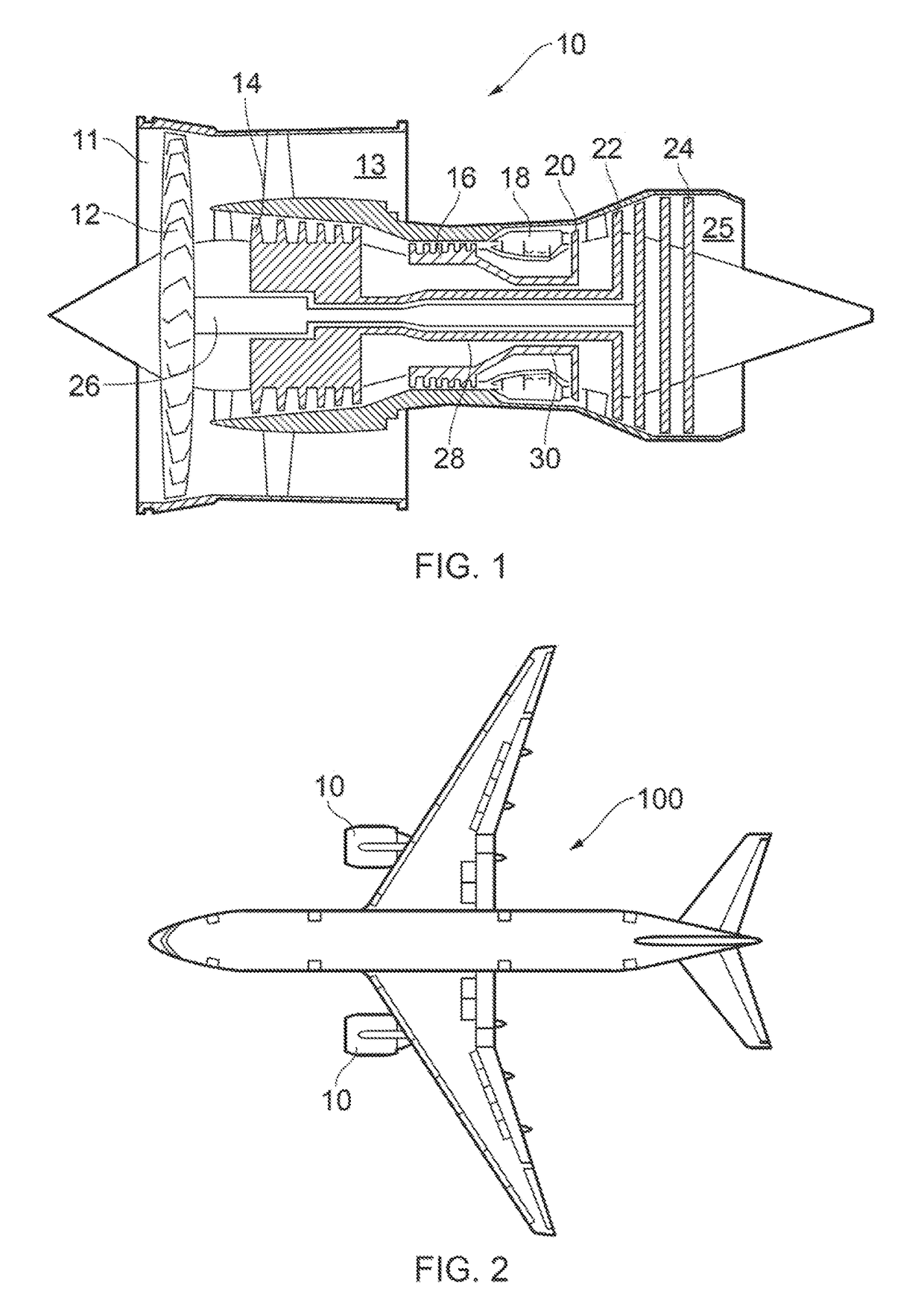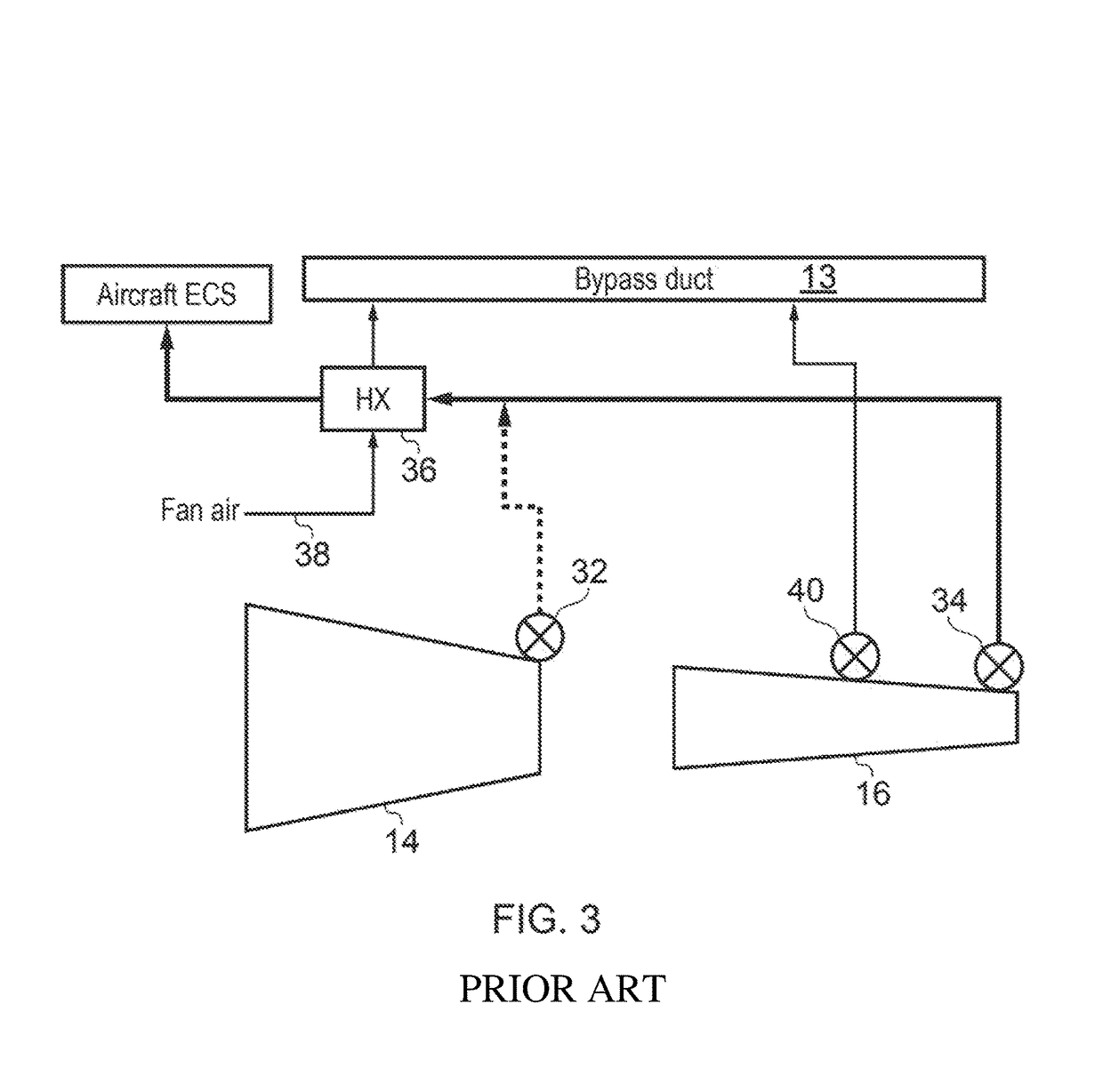Pnuematic system for an aircraft
a pneumatic system and aircraft technology, applied in the direction of machines/engines, transportation and packaging, machine/engines, etc., can solve the problems of excessive thrust specific fuel consumption (sfc), limited minimum thrust that can be achieved by the engine in flight (known as “flight idle thrust”), and current systems are not optimal
- Summary
- Abstract
- Description
- Claims
- Application Information
AI Technical Summary
Benefits of technology
Problems solved by technology
Method used
Image
Examples
Embodiment Construction
[0040]FIG. 1 shows a gas turbine engine 10. Gas turbine engines 10 are mounted on an aircraft 100 in pairs, as shown in FIG. 2. The engine 10 comprises, in axial flow series, an air intake duct 11, an intake fan 12, a bypass duct 13, an intermediate pressure (IP) compressor 14, a high pressure (HP) compressor 16, a combustor 18, a high pressure turbine 20, an intermediate pressure turbine 22, a low pressure turbine 24 and an exhaust nozzle 25. The fan 12, compressors 14, 16 and turbines 20, 22, 24 all rotate about the major axis of the gas turbine engine 10 and so define the axial direction of gas turbine engine.
[0041]FIG. 4 shows a pneumatic system 131 for use with the gas turbine engines 10 and aircraft 100. The pneumatic system 131 comprises at least one first engine core compressor bleed offtake in the form of an engine handling bleed offtake 140. An intake of the offtake 140 is in fluid communication with a relatively high pressure main engine compressor stage such as a compres...
PUM
 Login to View More
Login to View More Abstract
Description
Claims
Application Information
 Login to View More
Login to View More - R&D
- Intellectual Property
- Life Sciences
- Materials
- Tech Scout
- Unparalleled Data Quality
- Higher Quality Content
- 60% Fewer Hallucinations
Browse by: Latest US Patents, China's latest patents, Technical Efficacy Thesaurus, Application Domain, Technology Topic, Popular Technical Reports.
© 2025 PatSnap. All rights reserved.Legal|Privacy policy|Modern Slavery Act Transparency Statement|Sitemap|About US| Contact US: help@patsnap.com



